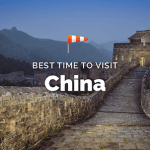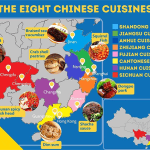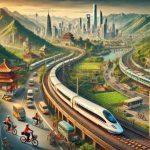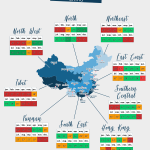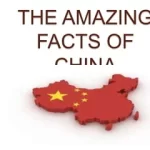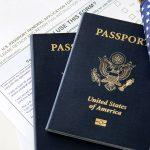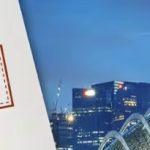
The main attraction in Pingyao’s walled city is – well, the city itself. i.e. – simply wandering the streets. Nearly every building dates from the Ming (1368-1644) or Qing (1644-1911) Dynasties. The car-free status and ancient street plan adds to the strong atmosphere.
Entry to the walled city is free. However, admission to any of the 30 specially-designated attractions inside the city requires a common ticket (¥150 circa summer 2011) that lasts for 3 days. Such tickets include a pamphlet with a map, though not descriptions, of the sites.
These specially-designated attractions include, among others:
City wall from outside East Gate
City Walls. Pingyao was originally established some 2700 years ago, during the reign of King Xuan (827-782 BC) of the Western Zhou Dynasty. The original walls were made of tamped dirt and were located to the northeast of the present location. The current wall–faced with bricks and stone–was started in 1370, making it over 600 years old. It is often said that the city wall is shaped like a tortoise–a traditional Chinese symbol of longevity–with the south gate and north gate representing the head and tail respectively. The east and west walls each have two additional gates, representing the tortoise’s feet. A series of 72 watchtowers are distributed around the wall, and a moat, now dependent on the rains, encircles the city. One can still walk the 6 km long road atop the ramparts, with the outward-facing parapets punctuated by 3000 crenelations, or openings for shooting.

County Government Office ”(Yamen)”. Pingyao has been a county seat ever since the establishemnt of the prefecture-county system in the Qin dynasty, and the city has a well preserved yamen, or county government office, a complex which houses the home and office of the magistrate sent to act as mayor, judge, and senior official. This yamen consists of an archway, ceremonial gate, various offices, a prison, a court, meeting rooms, a residential area, and a garden. This yamen compound was built in 1346, during the Yuan Dynasty, but only one building remains from the Yuan period, the rest having been built during the Ming Dynasty. There are altogether over 300 rooms in the complex.
Temple of the City God. While the yamen ruled the “yang” of the human world, the Temple of the City God (“Chenghuang Miao”) ruled the “yin” of the spiritual world. These two sites were situated so as to balance each other, with both on the same street and placed equidistant from Qing-Ming Street (South Street), with the yamen to the west and the Temple of the City God to the East. Visitors enter the temple, which consists of seveal courtyards and halls, through a magnificent three-gate wood archway. The main hall of the Temple is still very much in its original state and is clearly still in regular use. Elsewhere in the Temple visitors will also see a re-creation of heaven and hell, with every manner of torture shown in hell, from being cut to bits and being boiled to death, with happy families painted on the walls of heaven above. Unlike most City God temples, this one honors not just the City God but also the God of Wealth and the Kitchen God. The Temple of the City God was originally built in the Northern Song Dynasty (960-1227) and has undergone two major renovations due to fire in 1544 and 1859.
Ming-Qing Street. This street, named for the Ming and Qing Dynasties, has been the main comercial avenue in Pingyao for centuries. Hundreds of shops line this busy street, most of them built in the Ming and Qing Dynasties. Also called Nanda Jie, or South Street, Ming-Qing Street houses many courtyard houses–one-story compounds with rooms built around a series of courtyards–and a number of the main tourist sites. Today, many traditional-style shops line the street and sell food, snacks, specialities, paintings, furniture, calligraphy, and souvenirs. Also on this street is the City Tower; at 18.5 meters it is the tallest structure in the city.








